Could it happen to YOU?
Lessons we can learn from the 'Barefoot Bandit'
What you can do
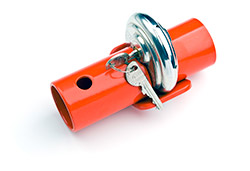 Aircraft thefts in the United States are pretty rare. Colton Harris-Moore may have been a statistical anomaly, but there are concerns that the notoriety he has received could inspire copycat crimes.
Aircraft thefts in the United States are pretty rare. Colton Harris-Moore may have been a statistical anomaly, but there are concerns that the notoriety he has received could inspire copycat crimes.
“Our biggest enemy is complacency, and the perception of general aviation cannot afford complacency,” said Brittney Miculka, AOPA manager of security and borders. “General aviation remains secure because we are a close-knit community that looks out for each other. It is important to take the proper measures to secure your airplane—every time. Security is everyone’s responsibility.”
There are simple, economical steps aircraft owners and pilots can take to deter potential thieves. Prop locks, easily secured around and removed from the propeller, can be purchased for as little as $60. Throttle locks cover and immobilize push/pull and vernier-type throttles and mixture controls; they can be purchased for less than $100. Wheel locks and locking wheel chocks also are available, for a variety of prices, but may not be the best choice if an FBO may have to move your aircraft. All are available from Sporty’s Pilot Shop, Aircraft Spruce, and other pilot-supply outlets.
Assess the security of your hangar, and if necessary, consider upgrading the walk-in door or installing a steel latch cover. —MPC
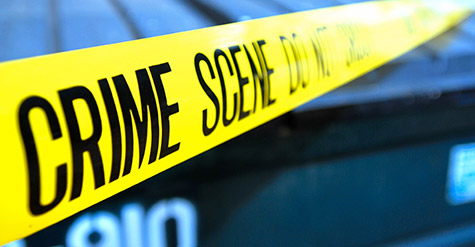
Seattle radio personality Bob Rivers had just finished his show on the morning of November 12, 2008, and was sitting in his office when his boss came in and said, “This is a strange call. He says the Yakima [Washington] state police are on the phone, and they say that your airplane has crashed.”
Thinking it was a prank, Rivers picked up the phone. “He said, ‘We have an airplane down on the Yakama Indian Reservation’s tribal hunting grounds and I’m glad to hear your voice. We can’t find the pilot.”
But Rivers knew that his 1999 Cessna 182 was in its hangar at the Orcas Island Airport in Eastsound, Washington. “I called my mechanic, Geoff, and said I had a nutty call from the state police and they say my airplane has crashed. Would you poke your head in my hangar?
“It seemed like an eternity,” Rivers recalled. Unable to wait any longer, he called back. “There was silence, and then he said, ‘The hangar’s empty.’ At that moment I was dumbfounded. And then it sunk in that somehow, my airplane had left.”
Pat Gardiner of Bonners Ferry, Idaho, got a call on September 28, 2009, that his hangar had been broken into. “The deadbolt had been pried open,” he recalled. The baggage-door lock on his 2005 Cessna Turbo 182 had been jimmied, and the passenger door popped open. Nothing was missing but a Leatherman tool, however, so the hangar door was secured and padlocked.
“The next morning I got a call from a guy who flies early in the morning, and he asked if I was flying,” Gardiner said. “My hangar was open and the airplane was gone.”
John Miller, a beer wholesaler, was working in his Bloomington, Indiana, warehouse on July 4, 2010, when he received a phone call from an unfamiliar number. “I didn’t recognize the area code,” said Miller, who let the call go into voice mail and listened to the message a few minutes later. “It was the Coast Guard from Miami and they said they’d received an ELT ping from my airplane. I thought, ‘It couldn’t be.’
“I immediately turned and drove to the airport to check my hangar, and lo and behold, the airplane was gone.” Miller’s 2008 Cessna Corvalis 400 TT was found crashed in a mangrove swamp beside Great Abaco Island in the Bahamas.
• • •
Although Rivers, Gardiner, and Miller have never met, they have something in common with only two other aircraft owners. Their airplanes are believed to have been stolen by Colton Harris-Moore, now 19, of Island County, Washington. After escaping from a Renton, Washington, group home in April 2008, Harris-Moore is the suspect in a spree of more than 80 crimes that include theft, breaking and entering, and stealing several cars and boats—in addition to his illicit flights.
Police reports and media accounts paint a picture of a misguided young man who developed a talent for breaking and entering, and eluding capture. Harris-Moore shunned traditional flight instruction and taught himself the basics of flying, apparently logging hundreds of hours on Microsoft Flight Simulator and, later, buying pilot-training materials with stolen credit cards.
“He apparently broke into a restaurant, found the owner’s credit cards, and ordered a private pilot course—with overnight delivery,” said Hal Shevers, founder and chairman of Sporty’s Pilot Shop. “After it was delivered, he broke in again, and stole the package.” Sporty’s had no idea anything was amiss until the owner called to question the charge, Shevers said.
About four years earlier, Harris-Moore received AOPA’s Flight Training magazine for six months. He also is believed to have kept pilot operating handbooks from some of the airplanes.
Harris-Moore garnered the nickname “Barefoot Bandit” after bare footprints were found at the scenes of several crimes.
• • •
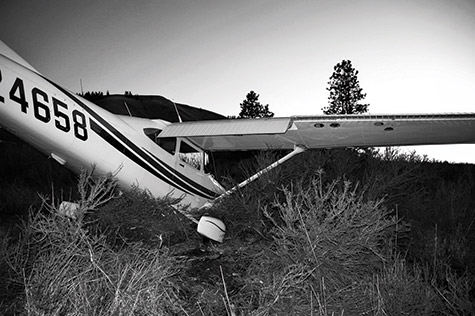
Rivers’ Skylane is believed to be the first airplane Harris-Moore stole, before the young man garnered a reputation as a prolific airplane thief.
“I remember that morning that I was on the air at 6:30, and we were talking about the weather.” The weather was good, but wind gusts of more than 50 mph were forecast. “The pilot in me immediately thought, ‘I’m glad I’m not flying in that.’ Ironically, about that time my airplane was flying overhead.”
After the airplane was taken, Rivers immediately started wondering if a friend had borrowed the Cessna, but quickly ruled that out. “I was then in shock, just trying to learn everything I could.”
Police and the airport manager found that the hangar’s walk-in door, in the lower portion of the bifold hangar door, had been pried open. “After that we all realized how incredibly easy it was to break into a hangar. You could literally with a screwdriver just pop the latch.” Or by removing a couple of nuts and bolts, you could remove a plastic window.
 Rivers’ hangar is in a quiet spot on the airport, not readily visible unless you’re driving between the hangars, with woods on the other side. “Even to this day I wonder if someone sat in those woods,” watching, he said. Keys were found in the wreckage, which Rivers went to see the next day. He thinks the thief found them in a tackle box that he normally kept on his boat.
Rivers’ hangar is in a quiet spot on the airport, not readily visible unless you’re driving between the hangars, with woods on the other side. “Even to this day I wonder if someone sat in those woods,” watching, he said. Keys were found in the wreckage, which Rivers went to see the next day. He thinks the thief found them in a tackle box that he normally kept on his boat.
“The airplane was taken, it’s estimated, sometime around 6 a.m. The crash occurred roughly three, three and a half hours later. The plane was put down in a large wilderness area just to the east of Mount Rainier,” on the Yakama Indian Reservation. “It looked like a badminton birdie, with its tail sticking up in the air.” From a distance it didn’t appear damaged, but the prop, nose gear, and struts were destroyed, and the fuselage was damaged by brush.
“You can tell that the plane did not impact the ground—it was not nearly as damaged as you would have expected for that sort of terrain,” Rivers said. People who arrived shortly after the crash said the wind was blowing so hard it was difficult for a man to stand up. “This was in hills and mountains varying from 2,000 to 14,000 feet. That must have been a very rough ride. This was confirmed by the presence of vomit all over my plane.”
Rivers said he was struck by feelings of fear, failure, and loss—all at once. “What kind of scary person would do something this reckless? Drug runners? The tranquility of this quiet little island airport, where so many nice people had encouraged and helped me learn to fly, was shattered,” he said. “I couldn’t get it out of my head that my airplane had crashed. Even though I didn’t have anything to do with it, I felt that I had somehow let the airplane down.”
Rivers’ airplane was totaled, and he replaced it with a similar 2000 Cessna 182, bought as surplus from the Pennsylvania State Police. “Something about having a bad-ass police plane felt right,” he said. “And I had no plane for six months. The feeling of suddenly being grounded was an unexpected lifestyle change.” It took that long for Rivers to negotiate the insurance settlement and then find a replacement airplane.
• • •
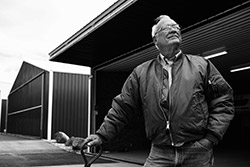 Although Rivers had never heard of Colton Harris-Moore before his airplane was stolen, Gardiner got a warning of suspicious activity nearby before his Cessna was taken. (In the meantime, Harris-Moore was suspected of stealing a Cirrus SR22 in Friday Harbor, Washington, and flying it to Orcas Island on September 11, 2009.) An airport board member had heard several hangars were broken into at Creston Airport in British Columbia, Canada, not too far north of Bonners Ferry—and a Cessna 182 probably would have been stolen there, except the thief ran its battery down.
Although Rivers had never heard of Colton Harris-Moore before his airplane was stolen, Gardiner got a warning of suspicious activity nearby before his Cessna was taken. (In the meantime, Harris-Moore was suspected of stealing a Cirrus SR22 in Friday Harbor, Washington, and flying it to Orcas Island on September 11, 2009.) An airport board member had heard several hangars were broken into at Creston Airport in British Columbia, Canada, not too far north of Bonners Ferry—and a Cessna 182 probably would have been stolen there, except the thief ran its battery down.
Fast-forward to the hangar break-in. Gardiner said his hangar had a sign warning of an electronic surveillance system, and he thinks the thief broke in, then left to see what would happen. (There was no system then, but one has been added.) “At that point there was no clue it was the ‘Barefoot Bandit’,” he said.
“We figured that he broke in at night, and sat in the plane and read the POH. He had stolen a bicycle from the FBO, down at the end of the runway, and they found it ditched behind the hangar.” Indications were that it had been pushed while carrying a heavy load, and there were bare footprints beside the tire tracks. That’s when law enforcement began to suspect Harris-Moore, Gardiner said.
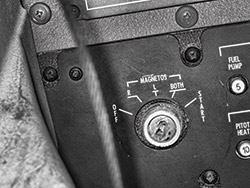 His Skylane wasn’t found until two days later, near Granite Falls, Washington. The flight may have departed from the taxiway; according to witnesses, “It was firewalled and he barely made it over the top of the trees.” After following an irregular path to Granite Falls, the pilot was lucky to survive the landing. “The only thing that saved his life was that the [seat belt] air bags deployed in the airplane,” Gardiner said. “They figured that he came in at about 110 knots, and there was only 90 feet of marks on the ground.” The landing, on timberland that had been clear-cut, was estimated at 6 or 7 Gs; stumps tore up the fuselage. “It’s a good advertisement for air bags in airplanes, I’ll tell you.
His Skylane wasn’t found until two days later, near Granite Falls, Washington. The flight may have departed from the taxiway; according to witnesses, “It was firewalled and he barely made it over the top of the trees.” After following an irregular path to Granite Falls, the pilot was lucky to survive the landing. “The only thing that saved his life was that the [seat belt] air bags deployed in the airplane,” Gardiner said. “They figured that he came in at about 110 knots, and there was only 90 feet of marks on the ground.” The landing, on timberland that had been clear-cut, was estimated at 6 or 7 Gs; stumps tore up the fuselage. “It’s a good advertisement for air bags in airplanes, I’ll tell you.
“He must have panicked after he landed. The headsets were found about 15 feet away.” Then the thief poured a quart of oil into the cockpit and wiped everything down, apparently trying to destroy fingerprints.
Gardiner felt numb after his Skylane was stolen. “You can’t believe it. It doesn’t sink in for a while. You look back at an empty hangar, and say, ‘Wow, it’s gone.’ Then you just have to trust in law enforcement to be able to track them down and find out what happened. When you see the tenacity and the viciousness of the break-in, it sobers you up.”
His airplane ultimately was totaled. “It had just a hair over 300 hours on it,” he said. The POH was never found. “I figure that he probably studied that. It has everything from A to Z on how to fly the plane.” Gardiner replaced the Cessna with a 2009 Turbo 182.
• • •
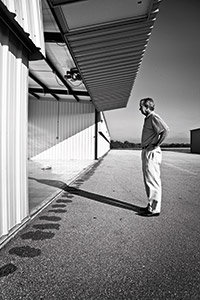 The day before Miller’s Corvalis was stolen, he’d returned from a trip and asked his mechanic to change the oil. Most of the airport community was aware Harris-Moore might be in the vicinity—several days earlier, a car he reportedly stole in Iowa was found a mile from the field—but Miller did not know. “I wasn’t aware that the kid was in the area. Everyone thought the other one told me.”
The day before Miller’s Corvalis was stolen, he’d returned from a trip and asked his mechanic to change the oil. Most of the airport community was aware Harris-Moore might be in the vicinity—several days earlier, a car he reportedly stole in Iowa was found a mile from the field—but Miller did not know. “I wasn’t aware that the kid was in the area. Everyone thought the other one told me.”
The thief took a pry bar to the back door of Miller’s hangar. “And he did it to the one adjacent to me. Another neighbor believes he ate some steaks from his refrigerator. We’re pretty sure he was in all the hangars. He was in at least three that we know of. He had to have been hanging out there for several days.”
After Miller’s mechanic changed the oil, he locked the fueled airplane—with the keys inside—in Miller’s hangar. “More than anything, [the thief] recognized the type that would likely have the G1000 in it—I think that’s what he was looking for,” he said. “I think if somebody’s really hell-bent on stealing something—I don’t care what it is—there’s not enough you can do to stop them.”
It’s not clear whether Harris-Moore ran out of fuel at the end of his 900-nm flight to the Bahamas, Miller said. “We think that he did. The salvage guy thought so too, from looking at the prop. I’m glad he didn’t kill himself—and I’m glad they didn’t have to shoot him when they arrested him.” Harris-Moore was captured July 11 after police shot out the engines of a boat he had stolen.
Miller quickly accepted the loss, but panicked about insurance coverage. “I knew it was gone, but didn’t really know if my insurance policy covered theft,” he said. “The very first thing I did was drive back to my office, pull out my policfy, and read it. It clearly stated that theft was covered. That was a relief.”
Frankly, he wished that the thief took any other asset except the Corvalis. “I don’t know what I’m going to do. I loved that airplane. It’s the first airplane I had that everything worked,” said Miller, who also is co-owner of a Beech King Air 200. “For the time being I’m going to fly that.”
He hoped to get back the four Bose headsets, oxygen equipment, and pulse oximeter that were in the Corvalis when it was taken. “They sent me back everything that had no value,” he said, adding that the insurance settlement was “the best of a bad situation. I really, really miss the airplane.”
• • •
Rivers immediately added an alarm system to his hangar, and installed metal plates over the lock area of the door to prevent its being wedged open. “Even in the hangar, now, I lock the airplane,” he said. “I think the lesson here for me, and others I’ve seen on Orcas Island, is make it harder to get in.”
Rivers has realized that Harris-Moore has changed the approach to airport security. “Up until now, I don’t think anybody gave it much thought.”
Gardiner’s hangar now has an alarm system, and he replaced the access door with a commercial steel door with a full steel casing. “I found out how inadequate these hangar doors are. They’re soft. Any pry tool can get around the deadbolt lock.
“I also have throttle locks on there now, on both the throttle and the mixture.” Gardiner, the AOPA Airport Support Network volunteer at Boundary County Airport, always uses them now, including when away from home. He also puts reflective heat shields in the windows, to keep prying eyes from seeing what’s inside. “I didn’t realize how vulnerable the airplane was. If anything happens to your airplane, report it immediately.”
Miller may install a concealed toggle switch to interrupt power to the hangar door, to keep a thief from opening it. “If you think about it, there are a lot of little things that could be done that make sense. You could do that on your airplane, too.” He also likes the idea of a throttle lock.
At press time, Harris-Moore was being held in Seattle—charged in a federal complaint filed December 11, 2009, with interstate transportation of stolen property in the theft of Gardiner’s Cessna 182. Authorities in multiple jurisdictions are continuing investigations and discussing the possible consolidation of the many other charges expected to be filed against Harris-Moore.
He’s also the suspect in a fifth airplane theft, that of a Cirrus SR22 stolen February 10, 2010, from Anacortes, Washington, and flown to Orcas Island—a flight that attracted attention because it came perilously close to entering a temporary flight restriction for the Olympic Games then under way in Vancouver, British Columbia. Reports indicate that the two stolen Cirruses received only minor damage, but the three Cessnas—conservatively valued at more than $800,000—essentially were totaled. Interestingly, while media accounts have painted Harris-Moore as preferring aircraft with the Garmin G1000 glass panel, no more than two or three of the airplanes he stole were so equipped.
One the Barefoot Bandit missed
Harris-Moore arraigned Nov. 18 in Seattle Read more >>
It’s unlikely that Harris-Moore’s first trial will begin before sometime in 2011.
E-mail the author at [email protected].


